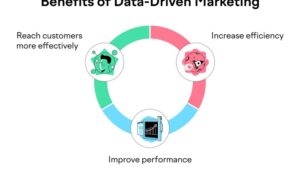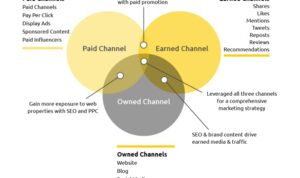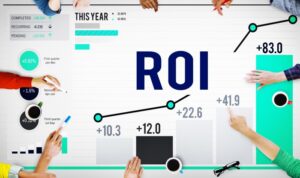Developing a Content Marketing Funnel sets the stage for this enthralling narrative, offering readers a glimpse into a story that is rich in detail with american high school hip style and brimming with originality from the outset.
As we delve deeper into the realm of content marketing funnels, we uncover the secrets to crafting compelling strategies that drive success in the digital landscape.
Understanding Content Marketing Funnel
When it comes to content marketing, the funnel is where the magic happens. It’s like a journey that your potential customers take from discovering your brand to making a purchase. Let’s break it down!
The Stages of a Content Marketing Funnel
- Top of the Funnel (TOFU): This is where you cast a wide net to attract a large audience. Think blog posts, social media content, and videos that spark interest in your brand.
- Middle of the Funnel (MOFU): Now that you’ve got their attention, it’s time to nurture those leads. This is where you provide more in-depth content like guides, webinars, and case studies to build trust.
- Bottom of the Funnel (BOFU): The final stage where you convert those leads into customers. Offer free trials, demos, or discounts to seal the deal.
Examples of Effective Content Marketing Funnels
Take a look at how a software company uses a content marketing funnel. They start with blog posts to attract leads, then offer a free e-book in exchange for email sign-ups (TOFU). Next, they send targeted emails with case studies and testimonials to nurture those leads (MOFU). Finally, they offer a limited-time discount to push those leads to make a purchase (BOFU).
Creating a Content Strategy: Developing A Content Marketing Funnel
To successfully develop a content marketing funnel, having a well-defined content strategy is crucial. A content strategy Artikels the goals, target audience, key messages, and distribution channels for your content. It helps in creating a cohesive and consistent approach to content creation that aligns with your overall marketing objectives.
The Importance of a Well-Defined Content Strategy
A well-defined content strategy ensures that your content is relevant, valuable, and engaging for your audience. It helps in establishing brand authority, building trust with customers, and driving conversions through the marketing funnel.
Tips for Aligning Content with Different Funnel Stages
1. Awareness Stage: Create educational and informative content to attract a wide audience and generate interest in your brand or products.
2. Consideration Stage: Develop content that addresses specific pain points or challenges faced by your target audience and highlights how your products or services can solve them.
3. Decision Stage: Provide persuasive content such as case studies, testimonials, or product demos to help customers make informed purchasing decisions.
Examples of Successful Content Strategies
- 1. E-commerce Industry: Utilizing user-generated content, influencer partnerships, and personalized product recommendations to enhance the customer experience.
- 2. Tech Industry: Creating thought leadership content, whitepapers, and webinars to showcase expertise and drive product adoption.
- 3. Healthcare Industry: Sharing patient success stories, expert interviews, and educational resources to build credibility and trust among patients.
Generating Awareness

Creating awareness at the top of the content marketing funnel is crucial to attract potential customers and introduce them to your brand. This stage focuses on reaching a wide audience and making them aware of your products or services.
Role of Social Media
Social media plays a vital role in generating awareness as it allows businesses to connect with their target audience on platforms like Facebook, Instagram, Twitter, and LinkedIn. By creating engaging posts, sharing valuable content, and interacting with followers, companies can increase brand visibility and reach a larger audience.
- Regularly posting updates and sharing relevant content helps keep your brand top-of-mind for followers.
- Utilizing paid advertising on social media platforms can help target specific demographics and expand reach.
- Engaging with followers through comments, messages, and live sessions can build a community around your brand.
Role of
Search Engine Optimization () is another essential component in generating awareness by improving your website’s visibility on search engine results pages. By optimizing your content with relevant s, meta tags, and backlinks, you can attract organic traffic to your site.
- Creating high-quality content that answers common questions and provides valuable information can help improve your search engine rankings.
- Optimizing meta tags, titles, and descriptions with relevant s makes it easier for search engines to understand and index your content.
- Building backlinks from reputable websites can increase your site’s authority and credibility in the eyes of search engines.
Engaging Content Formats
To raise brand awareness effectively, businesses can leverage various engaging content formats that resonate with their target audience. These formats include:
- Infographics: Visual representations of data and information that are easy to digest and share on social media.
- Videos: Captivating visual content that can showcase products, share testimonials, or provide educational resources.
- Blogs: Informative articles that address common pain points or interests of your target audience.
- Podcasts: Audio content that allows for in-depth discussions, interviews, and storytelling related to your industry.
Nurturing Leads
To successfully move leads through the content marketing funnel, nurturing plays a crucial role. This involves building relationships with potential customers by providing them with valuable and relevant content to guide them towards making a purchase decision.
Email Marketing
- Personalized email campaigns can help nurture leads by providing tailored content based on the recipient’s interests and behavior.
- Automated email sequences can be set up to deliver a series of messages over time, keeping leads engaged and moving them closer to conversion.
- Segmenting email lists based on demographics, behavior, or interests can ensure that the right content reaches the right leads at the right time.
Webinars
- Hosting webinars allows you to engage with leads in a more interactive and personal way, providing valuable information and addressing their questions or concerns.
- Webinars can be used to showcase your expertise, educate leads about your products or services, and build trust with your audience.
- Following up with webinar attendees through email or additional content can further nurture leads and encourage them to take the next step in the funnel.
Personalized Content
- Creating personalized content that speaks directly to the needs and interests of individual leads can significantly increase engagement and conversion rates.
- Using data and insights gathered from lead interactions to customize content recommendations can help build a stronger connection with potential customers.
- Personalized landing pages, product recommendations, and targeted messaging can all contribute to moving leads through the funnel more effectively.
Converting Customers
In order to convert leads into customers at the bottom of the content marketing funnel, it is crucial to have a solid strategy in place. This involves utilizing effective calls to action (CTAs) and creating compelling landing pages to guide potential customers through the conversion process.
Importance of Calls to Action (CTAs) and Landing Pages, Developing a Content Marketing Funnel
CTAs play a vital role in prompting action from your audience. Whether it’s signing up for a newsletter, downloading a free resource, or making a purchase, CTAs provide clear direction on what steps to take next. Similarly, landing pages are designed to capture leads’ information and encourage them to take a specific action, ultimately leading to conversion.
- CTAs should be clear, concise, and compelling, encouraging users to take action.
- Landing pages should be visually appealing, easy to navigate, and focused on guiding users towards conversion.
- Optimizing CTAs and landing pages based on user behavior and feedback can improve conversion rates over time.
Examples of Successful Conversion-Focused Content Campaigns
One example of a successful conversion-focused content campaign is HubSpot’s “Inbound Marketing Methodology.” By providing valuable content through blog posts, webinars, and ebooks, HubSpot attracts leads and guides them through the sales funnel towards conversion. Their CTAs strategically prompt users to sign up for a free trial or request a demo, leading to increased customer acquisition.
Another example is Dropbox’s referral program, where users are incentivized to refer friends in exchange for additional storage space. This clever campaign not only encourages customers to convert but also helps in customer retention and loyalty.
Overall, implementing effective CTAs, optimizing landing pages, and analyzing user behavior are essential components in converting leads into customers successfully.
Measuring Success

In order to track the effectiveness of a content marketing funnel, it is crucial to focus on key metrics that provide valuable insights into the performance of the funnel. By measuring specific metrics, businesses can optimize their content strategy and improve overall conversion rates.
Key Metrics to Track
- Conversion Rate: Monitor the percentage of leads that convert into customers. This metric indicates the effectiveness of your content in driving conversions.
- Engagement Metrics: Track metrics like time spent on page, bounce rate, and social shares to gauge how engaged your audience is with your content.
- Lead Quality: Evaluate the quality of leads generated through the funnel to ensure that they align with your target audience and are likely to convert.
- ROI: Measure the return on investment from your content marketing efforts to determine the profitability of the funnel.
Tools and Analytics Platforms
- Google Analytics: Utilize Google Analytics to track website traffic, user behavior, and conversions. It provides valuable insights into the performance of your content marketing funnel.
- HubSpot: HubSpot offers a comprehensive set of tools for tracking and analyzing marketing efforts, including content performance, lead generation, and customer interactions.
- Kissmetrics: Kissmetrics provides in-depth analytics to track user behavior, funnel performance, and ROI, helping businesses optimize their content marketing strategies.
Analyzing Data for Optimization
- Set Clear Goals: Define specific goals and KPIs for your content marketing funnel to measure success accurately.
- Regularly Monitor Metrics: Continuously track key metrics to identify trends, patterns, and areas for improvement within the funnel.
- A/B Testing: Experiment with different content formats, CTAs, and messaging to determine what resonates best with your audience and drives conversions.
- Iterate and Optimize: Use data insights to make informed decisions and optimize your content marketing funnel for better performance and higher conversion rates.





